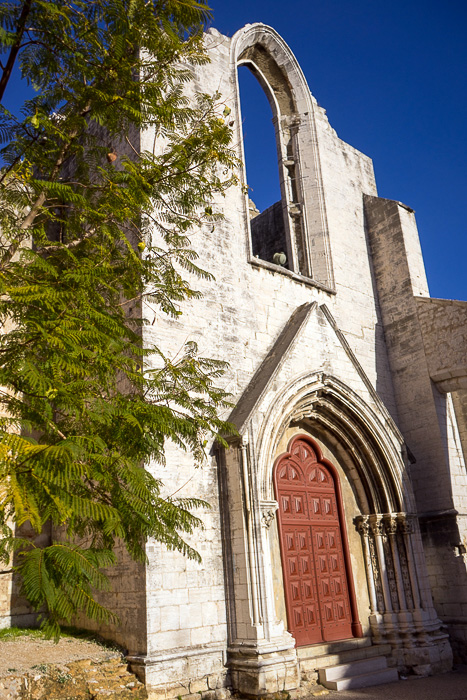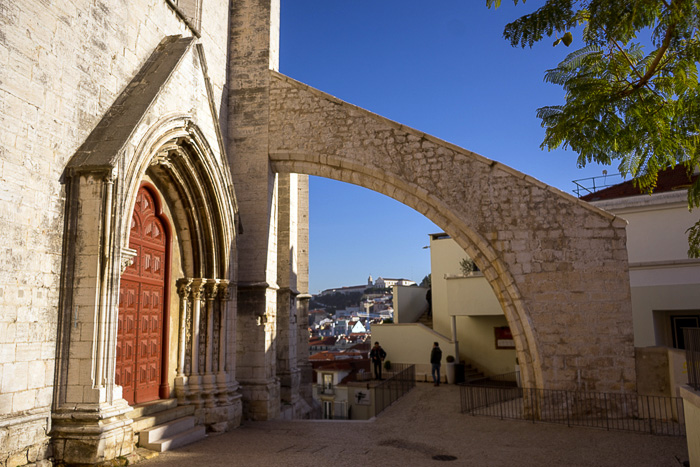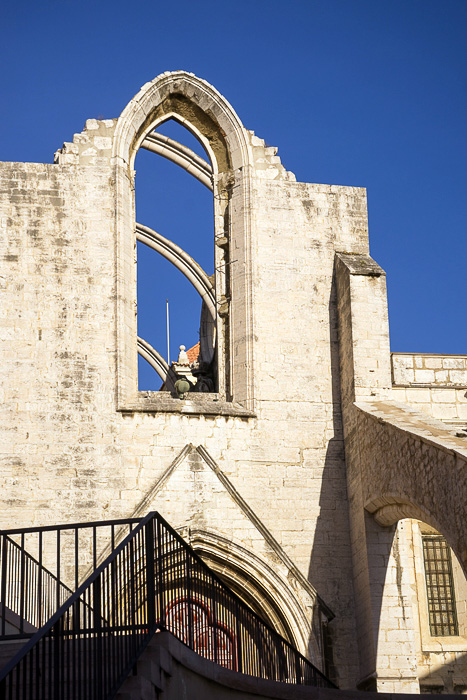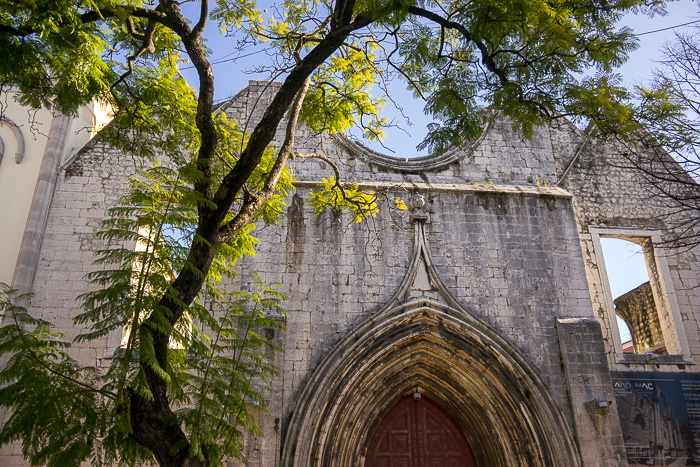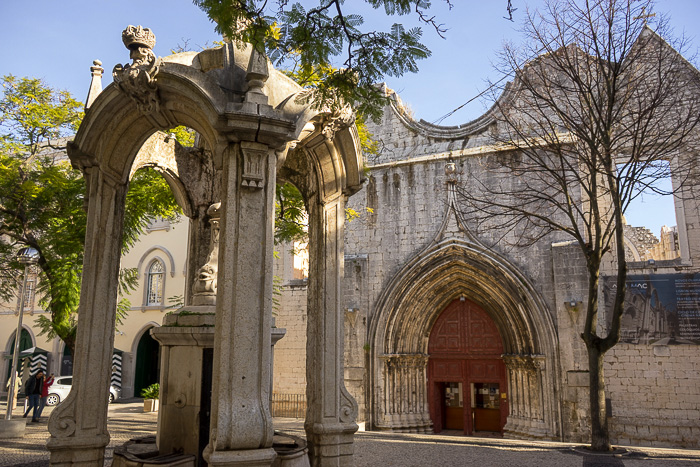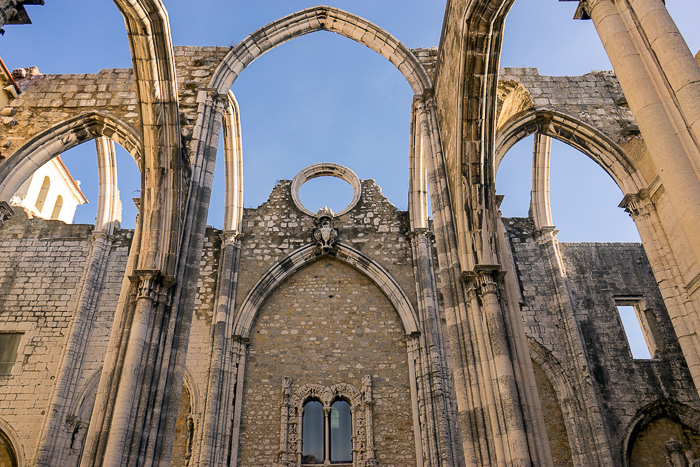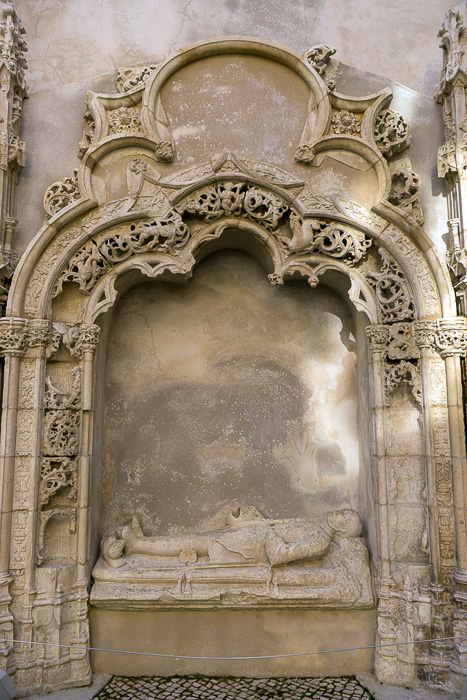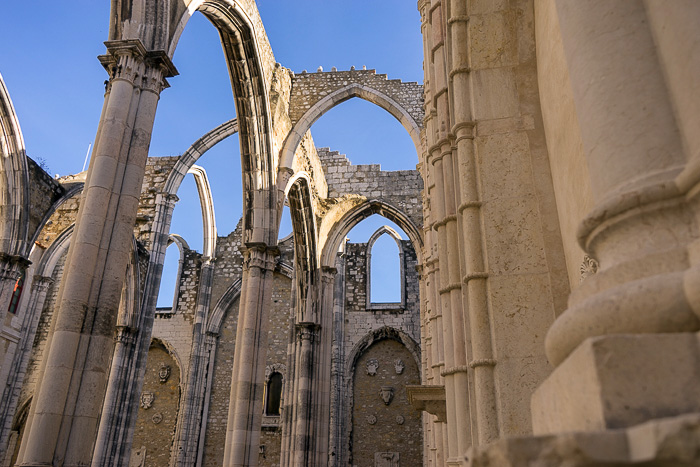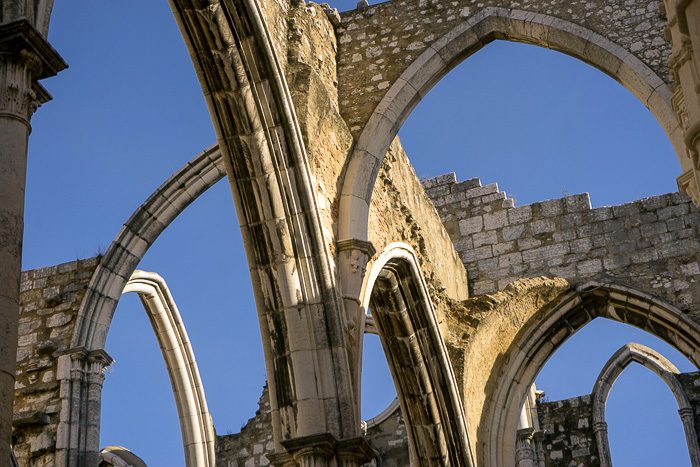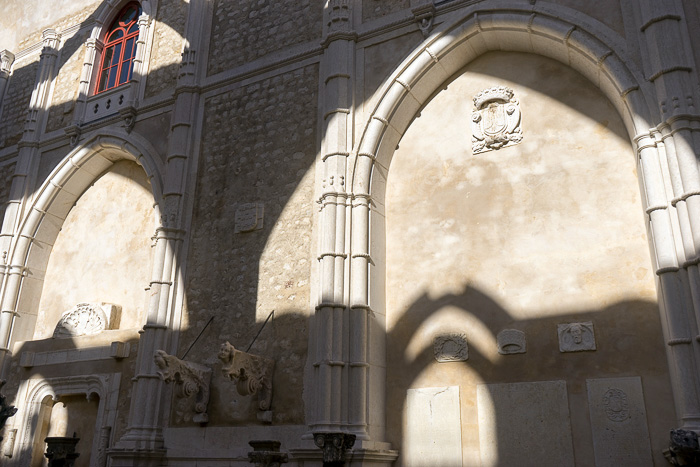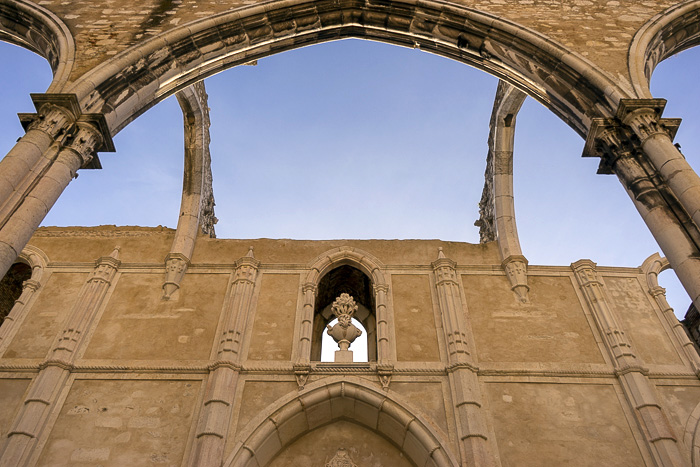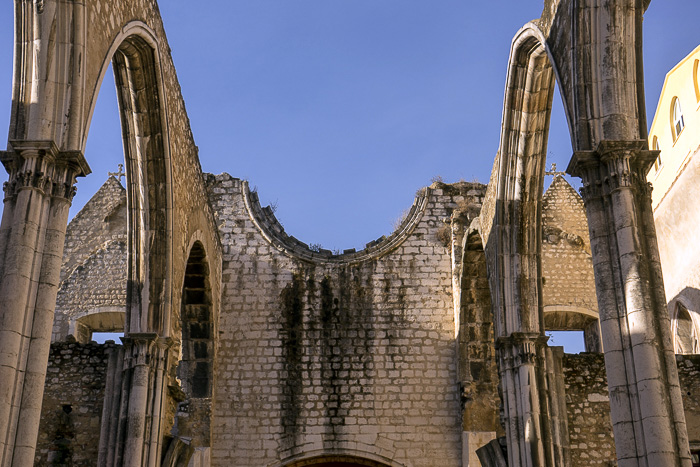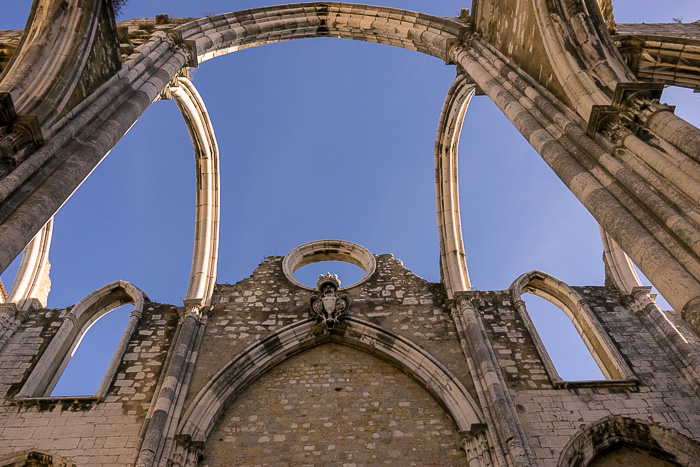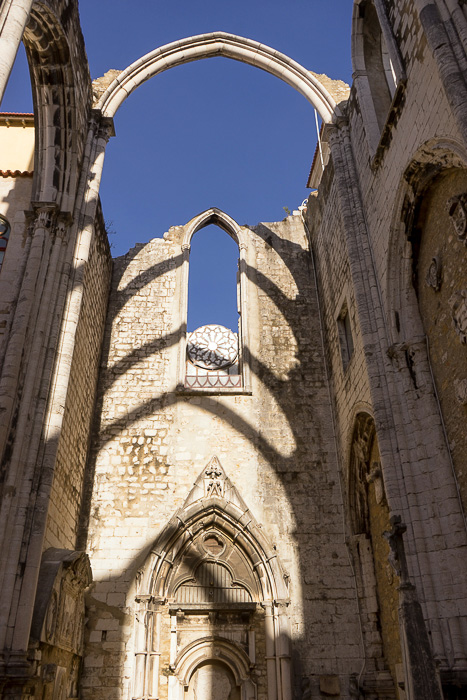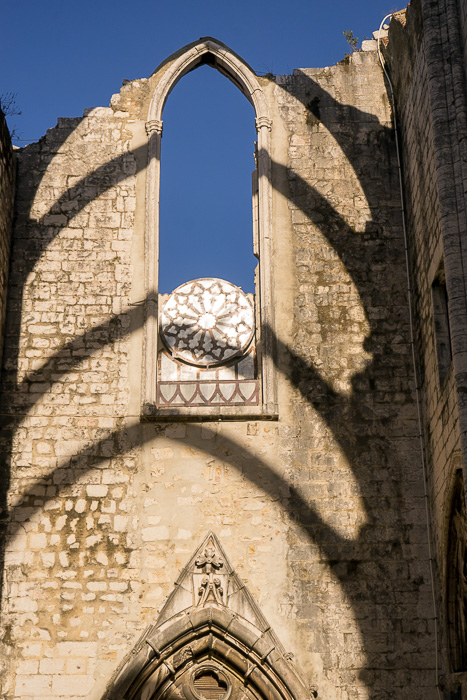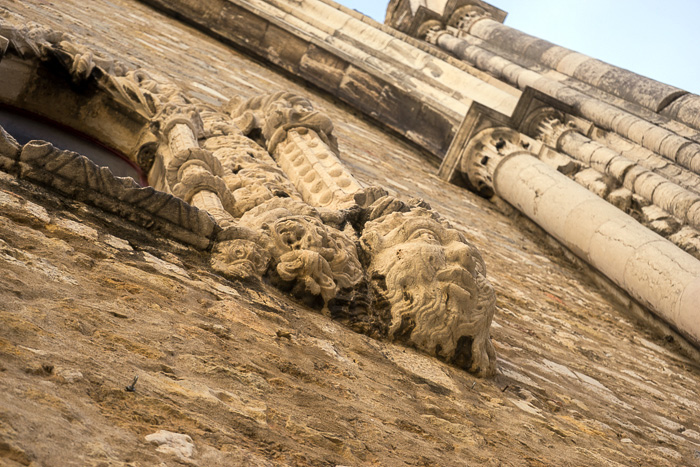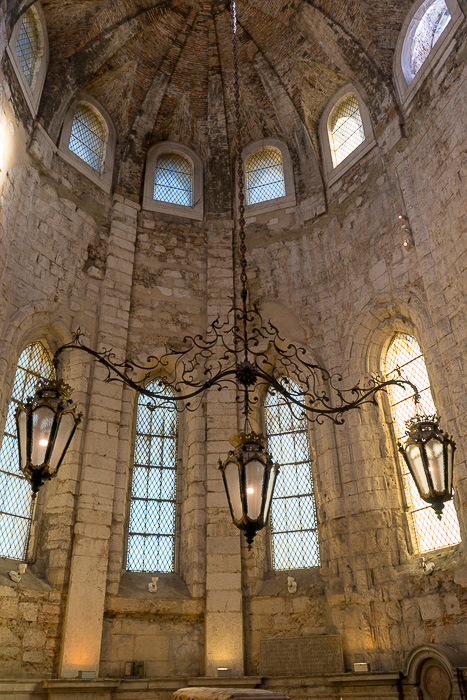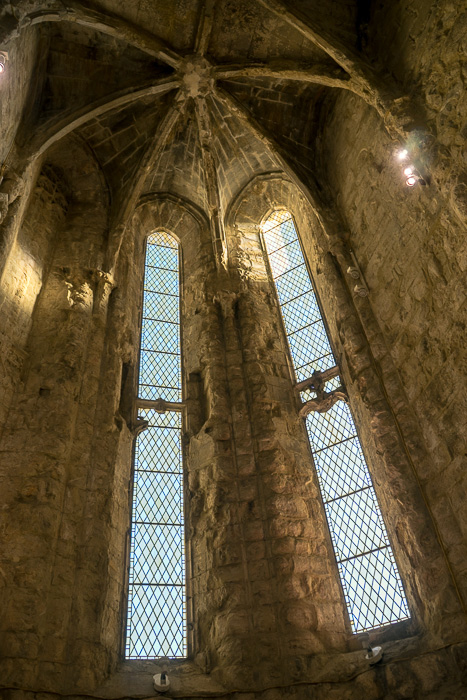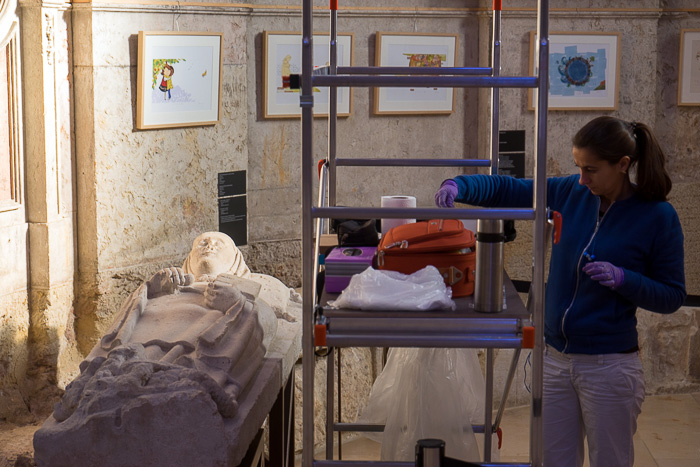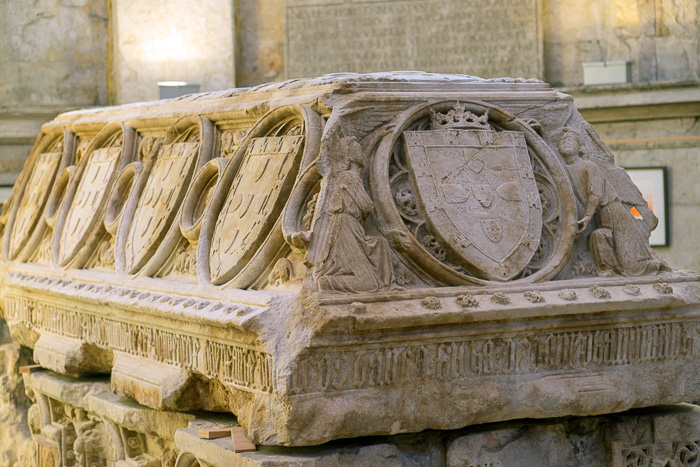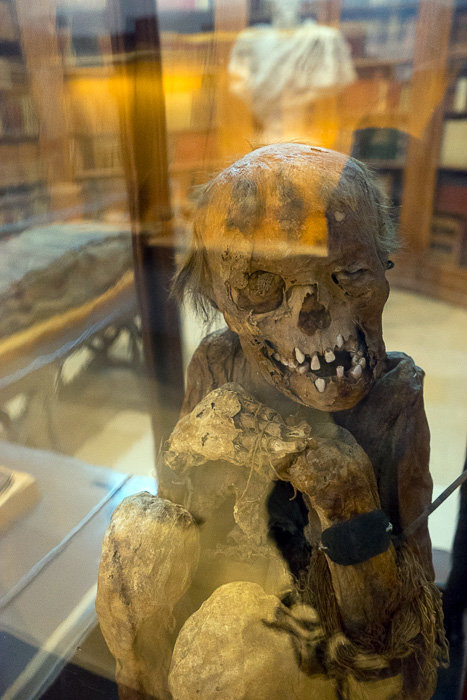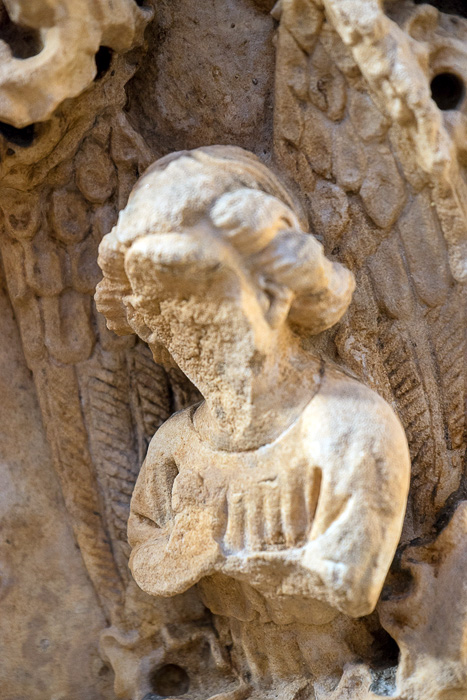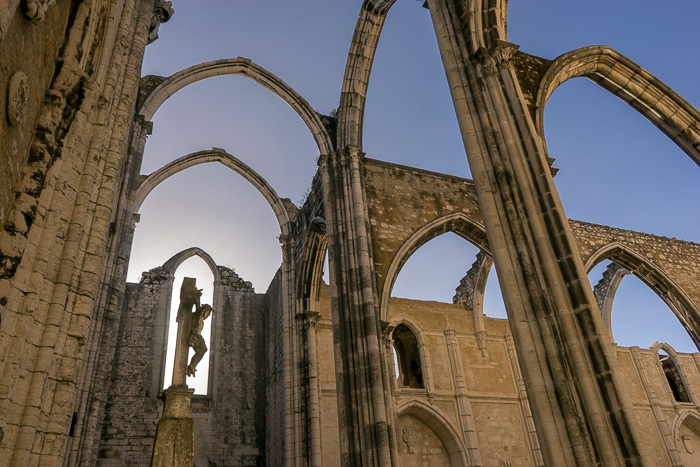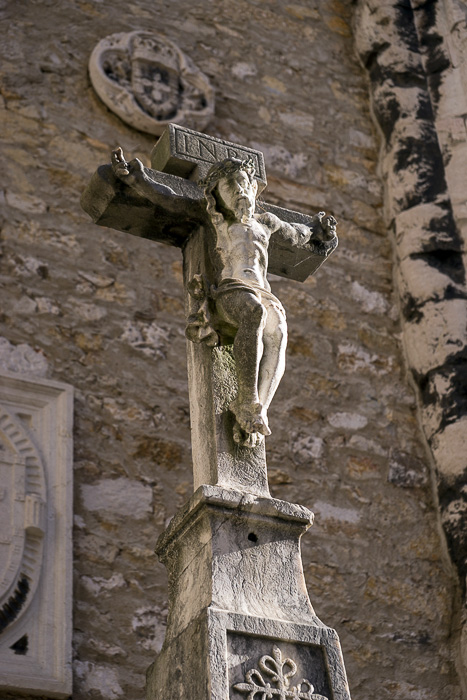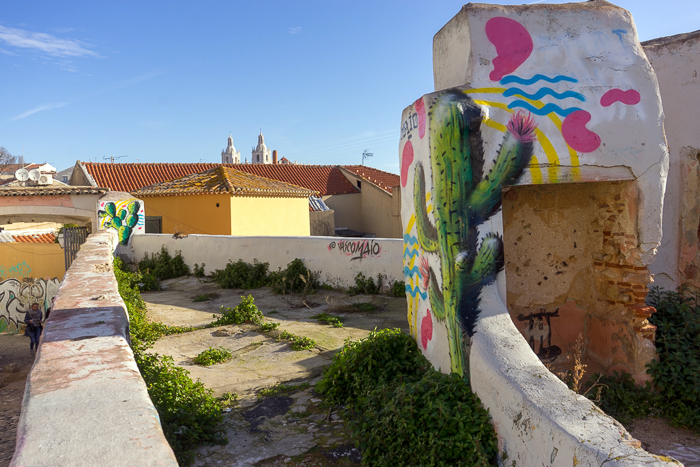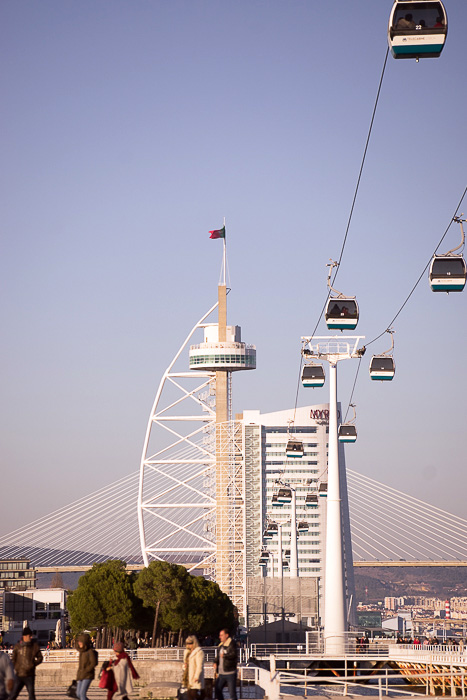The Remains of the Convento do Carmo
One of the oldest structures in Lisbon, the Convento do Carmo was completely destroyed by the earthquake of 1755. Well… almost completely destroyed. The roof collapsed, but a handful of the supporting arches survived, along with some chambers. Today, the ruined remains of the church have been preserved as a striking memorial to the biggest natural disaster in Portuguese history.
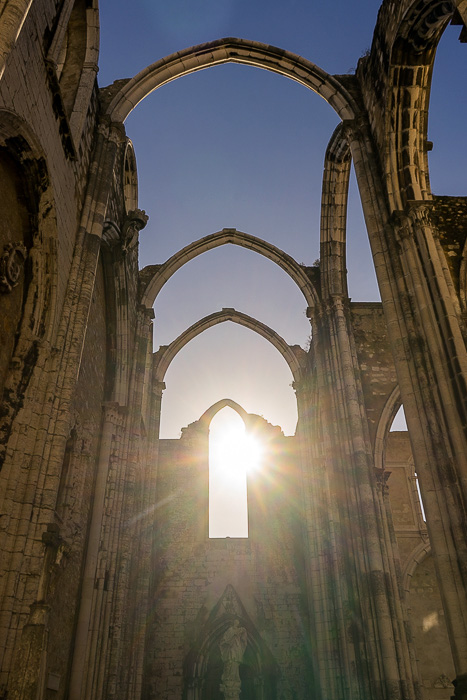
After the earthquake, plans were drafted to rebuild the Convento do Carmo. But this was a turbulent period in Lisbon’s history, with the Napoleonic invasions and exile of the royal court, and money was tight. The project was delayed endlessly, until someone eventually realized that it might be better left alone. Lisbon has plenty of churches, and the convent is far more romantic in ruins than it could possibly be restored.
You certainly don’t need to pay the entrance fee to appreciate the wrecked beauty of the convent; from the platform of the Santa Justa lift, there’s a tremendous view. But the ticket doesn’t cost much, and will gain you entrance to both the yard, where the crumbling walls are tenuously connected by the stone arches, and a small but compelling archaeology museum.
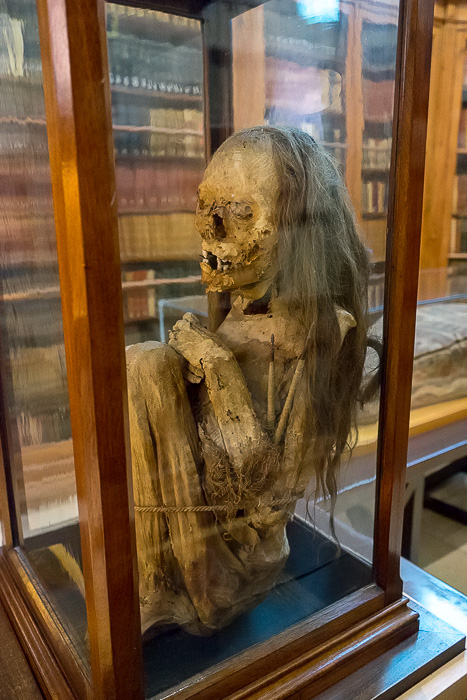
The four chambers of the convent which survived the wreckage now serve as the Museu Arqueológico do Carmo, with finds from the Paleolithic to the time of the Moors. There are magnificent royal tombs, Roman tablets, and Islamic tombs, all testifying to the complex history of Lisbon. The most noteworthy exhibits, however, come from Peru: two mummified children, upright and encased in glass cabinets.
Just like Santa Justa elevator, to which it’s physically connected, this is one of the city’s big tourist attractions, so it makes sense to show up as early as possible. We were there when it opened at 10, and the crowd was manageable.
